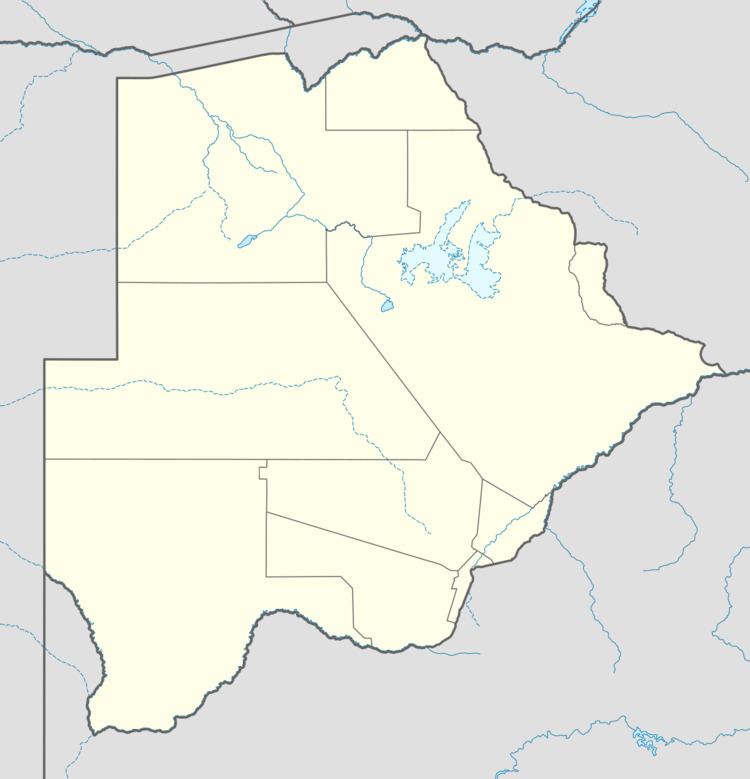Population 621 (2011) | ||
 | ||
Lejwana, Botswana is a small village in the Republic of Botswana in Africa. It is situated in the Southern District of Botswana. It lies between the coordinates 25°24'23S and 25°32'27E. It is situated between the villages of Gathwane, Pitsane, Kgoro and Digawana. Lejwana is about 30 km from Lobatse and about 100 km by road from the capital Gaborone.
Contents
Political Leadership
The MP is Rre Alfred Madigele who is also the Assistant Minister of Health in the Current Cabinet, and the councillor is Rre Beach Mooketsane. Lejwana also has a Village Development Committee(VDC). There is also the landoverseer, Rre Koogotsitse Mmila, who is a representative elected by the Land Board authorities. As each and every village in Botswana, Lejwana has a member of parliament, who represents the whole of Ngwaketse South and a Councillor for the Digawana Ward, which includes Lejwana.
Royalty and History
The Kgosi of Lejwana (a small hill) is His Highness Neo Letlhare. The old man, Kgosi Taolelo Letlhare, has retired and handed over to the incumbent, being his son Kgosi Neo Letlhare. Taolelo is the son of Kgethelo, born of Letlhare. Letlhare was sent as a tribal headman of Mongala ward to establish Lejwana in 1902. This was a result of what happened after 'British Bechuanaland' was divided into two in 1895, between a Colony on the south of Molopo and a Protectorate (the modern day Botswana) on the northern side. Kgosi Montshioa of Barolong, along with the then leading Batlhaping Kgosi, Mankurwane, complained of being left out of a protectorate as they preferred to be on the protectorate side. The then High Commissioner, Sir Williams considered their plea and negotiated with Kgosi Bathoen I to give a piece of Bangwaketse Land. Bathoen relented and gave them land between Ramatlabama, Pitsane, Kgoro Hill, Mogobewakgomo, Mokgomane and Phitshane.Hence Good hope was established as a new capital of BaRolong baga Montshioa. Bathoen then took out his trusted men from Kanye to ensure that Batlhaping and Barolong tribes do not settle in the Ngwaketse Homeland. Letlhare was therefore one of the headmen taken out of Kanye and settled in an area then known as GaBatlhaping. Other headmen given the assignment were Makaba in Gathwane, Selerio in Mokgomane and little is known as to who was assigned to settle in Phitshane. All these men were Bathoen's uncles. Kgosi Letlhare arrived with his brother Motseotsile from Kanye and other tribesmen Nkgelepang and Sennye. Letlhare was born of Mmolaatshepe a Mere a Selohilwe a Makaba II a Mongala a Makaba I a Kutwane a Leema I a Ngwaketse a Malope a Masilo a Melore. Letlhare's younger brother, in the junior house, Magogodi, was left to take care of the Mongala kgotla in Kanye. Magogodi had issue, bearing Gaopatwe (recently deceased Chief of Ga-Segwagwa), Ramokhana and others. The prominent royals in the village are the paternal uncles to the Chief, Tika Letlhare, Letlhare Letlhare, Rasaki Letlhare and Letlharenyana Letlhare. Bo-rangwane are those of the house of Waseteke (Letlhare's younger son) being Oboletswe's house, Rabontle's house and Kebalebile's house.
Climate
The climate of Lejwana is similar to that of the rest of southern Botswana. Winter starts in May and ends in July. The minimum temperature is 4 °C and the maximum is 24 °C. The coldest months are June (Seetebosigo, which literally means, do not visit at night) and July. Summer is from August to April (as it is usually called by the local people though there are three seasons within ths time period being spring, summer and autumn), sthe temperatures range from 15 °C to 31 °C. This is the period in which it usually rains in Lejwana with the minimum of 5.8mm and the maximum of 143mm depending on the month.
Demographics
The population of Lejwana city according to the 2001 Central Statistics Office population census was 621. Since this census, the population has increased due to people migrating to the village and the high birth rate and low death rate,thanks to the recent increase in the Botswana life expectancy.
Religion
Lejwana is a 100% Christian community. There are a few churches, including the Lighthouse Jesus Ministry, which is situated on the outskirts of the village and is currently under construction and the ZCC which is situated near Mount Lejwana. Not all the population go to these churches, as some do not go to church at all, and some go to churches outside the village like those going to IPHC in Lobatse.
Education
Lejwana has one primary school called Lejwana Primary School which opened its doors to the students around 1984. There is no elementary school and students go to Nthwalang Secondary School in Digawana for junior education and then to either LobSec or GoodHope Senior Secondary School for high school education.
Economy
Lejwana is a small village with few developments. The people are dependent on farming, with almost each and every household having a piece of land at the back of the house for ploughing (Segotlo,as the local people call it.) There are some farms owned by the 'whites' around the village which employs a number of village residents. Most of the residents live in towns such as Lobatse and Gaborone where they work. Lejwana Village has one shop named Lerothodi General Dealer which has been the core market for the village for many years now. It is owned by the Mahupu family, and there are a number of tuckshops, and a bar which opens during the festive season only.
